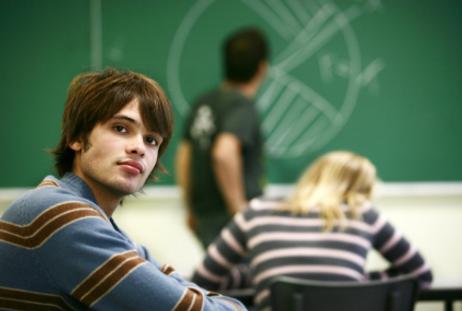Did you know that student dropout rates are still continuing to rise in some of the United States' most populated areas? According to Fox News, America's Promise Alliance reveals that in many urban areas, approximately half of public school students do not earn their high school diplomas. This report further found that 17 of the nation's 50 largest cities have graduation rates below 50 percent. Among the lowest cities are Detroit, Indianapolis, and Cleveland. In examining this crisis on a larger spectrum, only 70 percent of the United States' high school students graduate on schedule each year, and 1.2 million students opt to drop out of school each year. Although the current dropout epidemic is bleak, some school leaders have fortunately found programs to help transform their negative graduation rates.
This video reports on America's dropout epidemic.
Solving the Country's Educational Crisis
In response to the grim dropout statistics, the United States former Secretary of State Colin Powell stated “When more than 1 million students a year drop out of high school, it's more than a problem, it's a catastrophe.” Powell's wife, Alma Powell, further elaborated on the importance of high school education – arguing that public schools prepare individuals for higher education, new challenges, and issues that extend far beyond a classroom.
To address the many problems associated with this crisis, Colin and Alma Powell have created the Chair of the Alliance—an organization devoted to cutting the high school dropout rates across the country. Through the organization, the Powells and other collaborators meet with the leaders of each state and address specific struggles for individual communities. Alma Powell further asserts, “'We must invest in the whole child, and that means finding solutions that involve the family, the school, and the community."'
Community Outreach and the Impact on Dropout Rates
Aligning with Alma Powell's belief in uniting a community to help solve the educational crisis, public schools across the country have developed comprehensive programs to bring dropout students back to their classrooms.
For example, as reported by the Des Moines Register, Des Moines public schools reported a total of 710 dropouts during the 2007-2008 semesters. However, through outreach efforts from both the public schools and community, approximately 140 students made commitments to return to school!
Driving this shift are various community leaders, and perhaps most notably, the United Way of Central Iowa (UWCI). The UWCI recently held a “Reach Out to Dropouts” campaign. Volunteers and organization members hosted a full community walk, where participants actively persuaded students to re-enroll in their former schools. During the walk, over 200 volunteers spoke directly with 127 dropouts and their parents. Of these 127 students, only 13 of the students said they would not return to school. Based on the efforts of this walk alone, 23 of the dropouts agreed to officially re-enroll, while 58 dropouts were willing to consider a potential return to school.
Remarkably, the re-enrollment began even before this large-scale community walk. Leading up to the event, volunteers and organization members actively made phone calls to speak with students who had left school, while others even made personal home visits to students during the summer. As a result, 115 students re-enrolled before the day of the UWCI walk! From these community efforts, nearly 20 percent of Des Moines public school dropouts will be returning to their classrooms in the hopes of earning their diplomas.
While the UWCI efforts associated with the community walk, personal calls, and home visits have proven to be greatly effective, leaders are still working to improve the graduation and dropout rate. Other organizations and school-sponsored programs, such as the middle school alternative education center, are all part of the solution.
Des Moines is just one example of how public schools are working together with their local communities to improve graduation rates. By bringing dropouts back to classrooms, communities and schools can jointly solve the crisis facing America – and prepare our country for a brighter future.
Questions? Contact us on Facebook. @privateschoolreview














